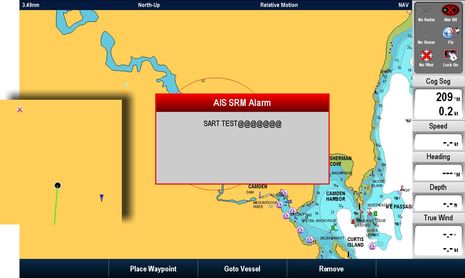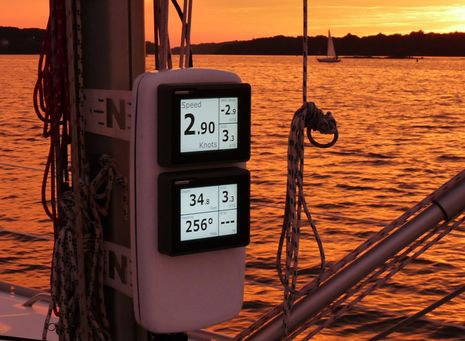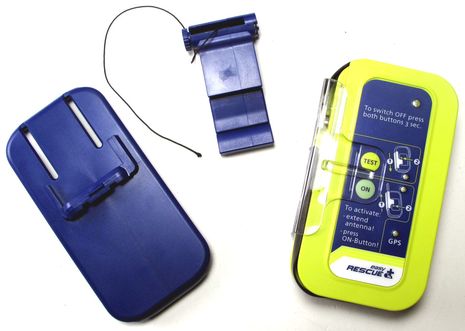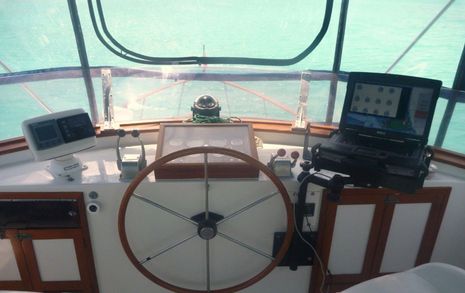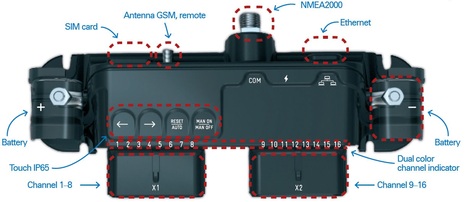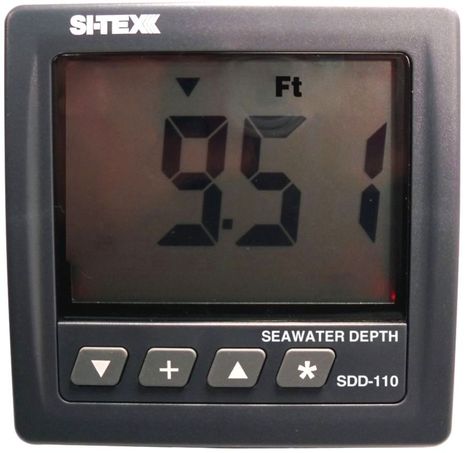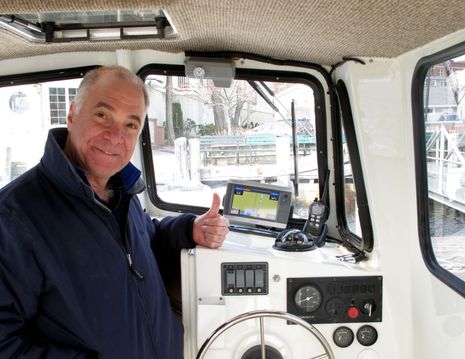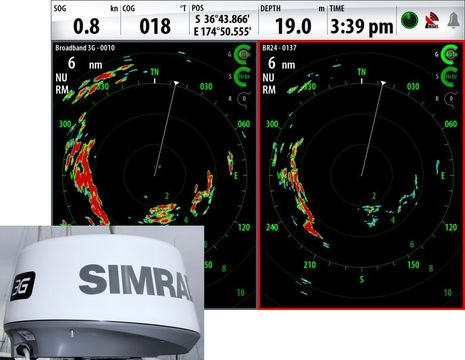AIS SART plotting, & NMEA 2000 AIS problems
A gold star to Raymarine for the E140W’s response to an AIS SART test! This seems like exactly the proper plotting behavior described by the USCG AIS expert Jorge Arroyyo in a comment to the entry about the easyRescue SART tested. Not only did the E Wide put up an alarm noting the SART TEST message but it also plotted the SART’s location with the correct distinctive icon (see inset above). And, as a bonus, it’s giving the operator quick soft key or touch shortcuts to setting up a go-to-SART route or dismiss the alarm. But so far the E140W is the only MFD that’s so well behaved and it wasn’t until I updated its software this weekend…



